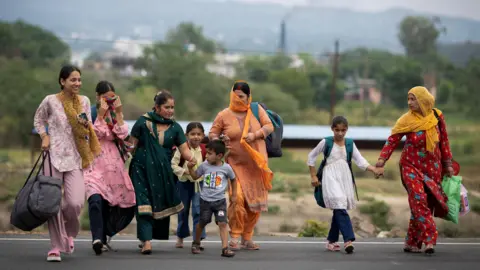India Pak War: Rising Tensions and the Path Forward
The relationship between India and Pakistan has always been complex, marked by occasional cooperation but frequent discord. Recent events have heightened concerns about another possible conflict, with many experts now closely tracking the latest developments in the ongoing India Pak war. In this article, we unpack the recent escalation, examine its causes, and consider the impact on civilians and the broader South Asian region.

The Recent Escalations
The Kashmir region, a flashpoint since both nations gained independence, remains at the heart of ongoing disputes. In the past week, India reported several strikes on key military bases, claims swiftly denied by Pakistan. According to a BBC report, India accused Pakistan of launching drone and missile attacks on military bases in Jammu, Udhampur, and Pathankot. Pakistan, however, denied any involvement, stating, “We deny it, we have not mounted anything so far.”
This escalation follows India’s strikes on suspected militant sites in Pakistan and Pakistan-administered Kashmir. The attacks came as retaliation for a deadly assault on Indian tourists in Kashmir the previous month, which New Delhi blames on Pakistan-based militants. Over the past few days, both nations have engaged in cross-border shelling, with casualties rising on both sides.
Complex History and Causes
Tensions between India and Pakistan often flare up over Kashmir. Both countries claim this territory but administer different parts. The dispute dates back to 1947, following the partition of British India. Over the years, multiple wars have been fought, and incidents along the border remain frequent.
For further insight into the historical context and why the region remains so volatile, see Why tensions in Kashmir are sparking fears of war | CNN. The article explains the decades-long conflict and how recent events have brought back global concerns about a possible full-scale India Pak war.
Humanitarian Impact on Civilians
The cost of conflict always falls heaviest on civilians. Locals living in border areas have faced evacuations, power blackouts, and the constant threat of shelling. According to reports, dozens of civilians, including women and children, have died in the recent cross-fire, while many others have been forced to leave their homes.
As covered in the BBC article on the rising toll, figures point to increasing fatalities and injuries in both Indian and Pakistani territories. Human rights groups continue to call for restraint, urging both countries to prioritize civilian safety and return to the negotiating table.
International Reactions and Call for Peace
The global response to these developments has been swift. The United Nations and several world leaders have called for calm and de-escalation. Western diplomats stress that a new India Pak war would not only endanger millions in the region but also threaten global stability due to both nations’ nuclear capabilities.
For the latest diplomatic efforts and potential paths to peace, refer to this New York Times report. The article details how international pressure could help reduce tensions and mediate a return to dialogue.
Conclusion: A Region on Edge
The India Pak war remains an ever-present threat, fueled by deep-rooted grievances and recent provocations. As military operations continue and the humanitarian situation deteriorates, international and local voices alike are urging both nations to choose peace over conflict. Staying informed about these developments and supporting calls for negotiation is key to promoting stability in South Asia.